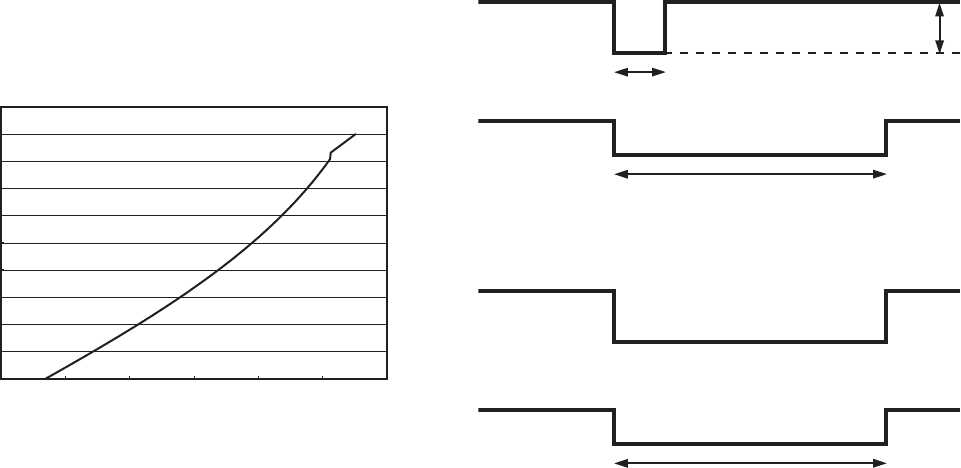
10
Functions
DFW-SX910/X710
AbsoluteShutterOffsetAddress is an offset address for
the absolute value control. See page 26 for the formula
for the offset address.
The change in shutter time will be used when the next
exposure starts. The current exposure will complete
with the previous shutter setting. This is true for all
exposure; short or long. If you intend to reflect the
new setting immediately, stop the output and start it
again.
Gain
This feature adjusts the brightness of the picture. Both
manual and automatic settings are available. The
variable range extends from 0 to 18 dB.
When automatic setting is selected, Gain is adjusted
automatically, based on the brightness of the subject.
At this time, the reference level (target point) of the
brightness is set in the Auto Exposure register.
For details on Auto Exposure, see page 8.
70 to 511 Gain = 20log10([658+code]/[658–code])– 0.35
512 to 551 Gain =(0.0354)(code)– 0.35
0.00
2.00
4.00
6.00
8.00
10.00
12.00
14.00
16.00
18.00
20.00
0 100 200 300 400 500 600
Trigger Shutter
This feature allows you to control the exposure timing
via a external signal input (Hardware Trigger) or via a
command sent from application software (Software
Trigger). There are two trigger modes:
– Trigger Mode 0 where the exposure time is
controlled by the shutter parameter
– Trigger Mode 1 where the exposure time is
controlled by the trigger pulse width.
In both modes, the leading edge of the hardware
trigger starts the exposure. In Trigger Mode 0, the
maximum exposure is limited by the shutter parameter.
In Trigger Mode 1, there is no limit to the exposure
time.
Software Trigger is defined by IIDC Standard, v1.31.
It is possible to trigger the cameras at full frame rate
using hardware trigger. (This was not possible with
the earlier DFW-SX900/X700 because the trigger in
would not be accepted until after the previous images
was output from the camera.) It is very important that
the exposure not end before the previous image is out
of the cameras. If the camera is trigger too fast or
there is noise on the trigger line that will cause the
exposure to end before previous image is output, you
will get double exposure of the image.
Trigger Mode 0
Input signal
4.0 to 5.0 Vp-p
Trigger width: 10
µ
s or wider
Exposure time
Set the exposure time using
the Shutter feature.
Trigger Mode 1
Input signal
Exposure time
Set the exposure time using the
width of the trigger signal pulse.
• Input impedance: 10 kΩ


















